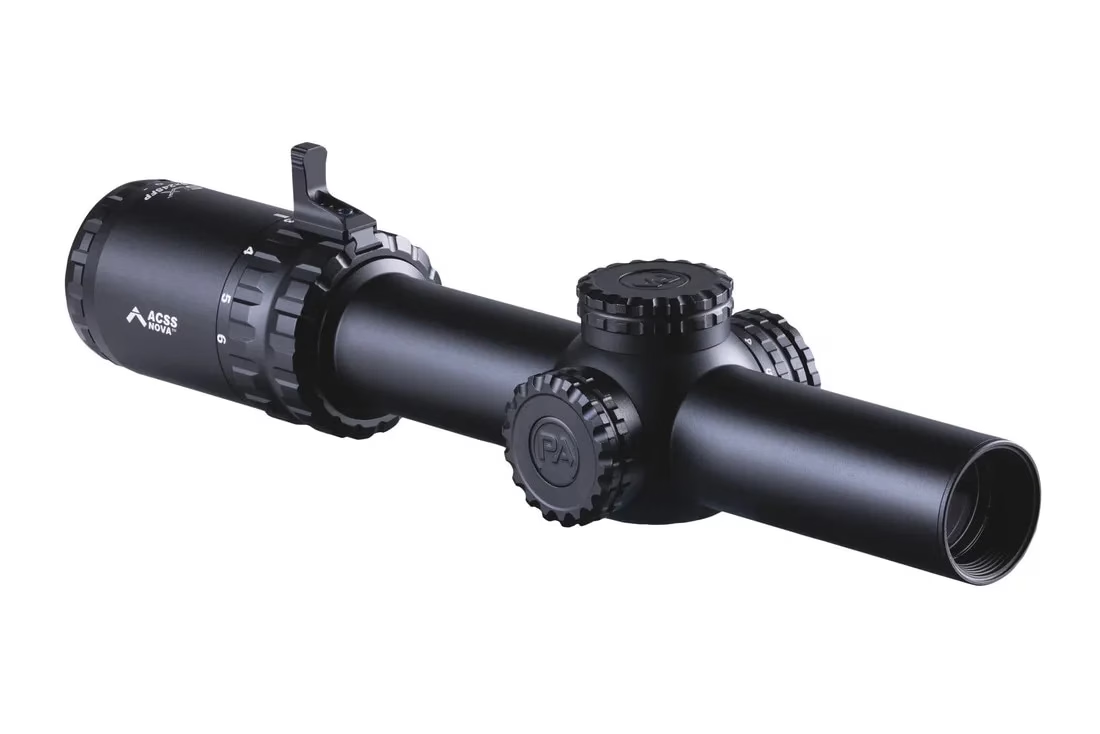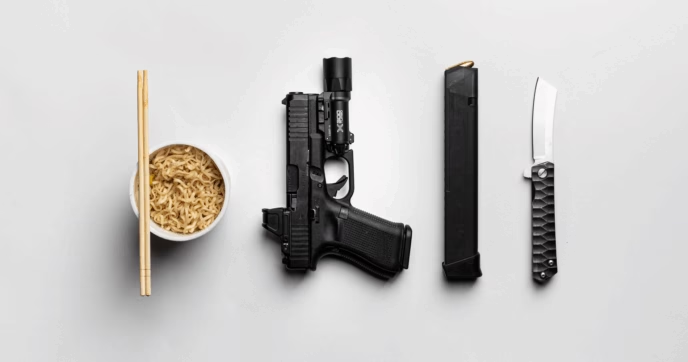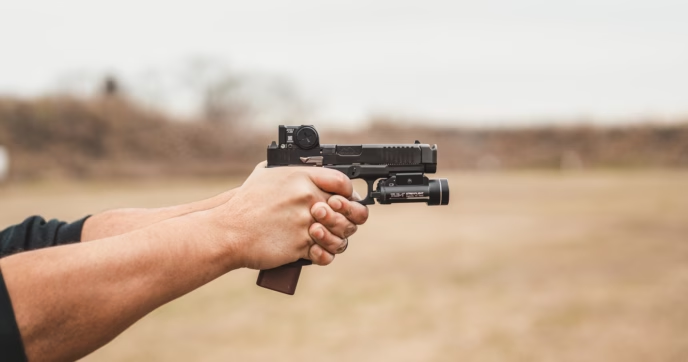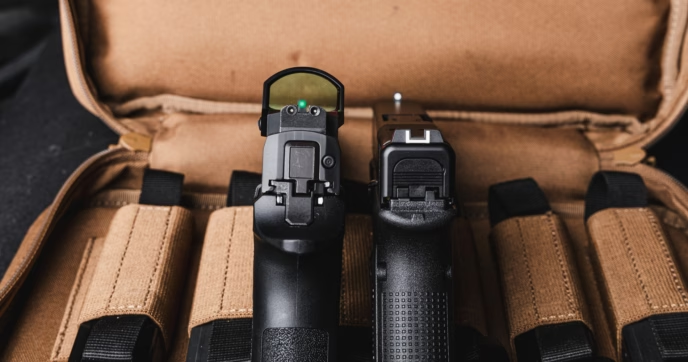When it comes to mounting a scope, the options are nearly limitless. Single-piece mount or rings; vertical, horizontal, or diagonal split, sight heights, accessory compatibility–all these things and more are available in spades on today’s market.
The attribute we want to look at today, though, is cantilevering.
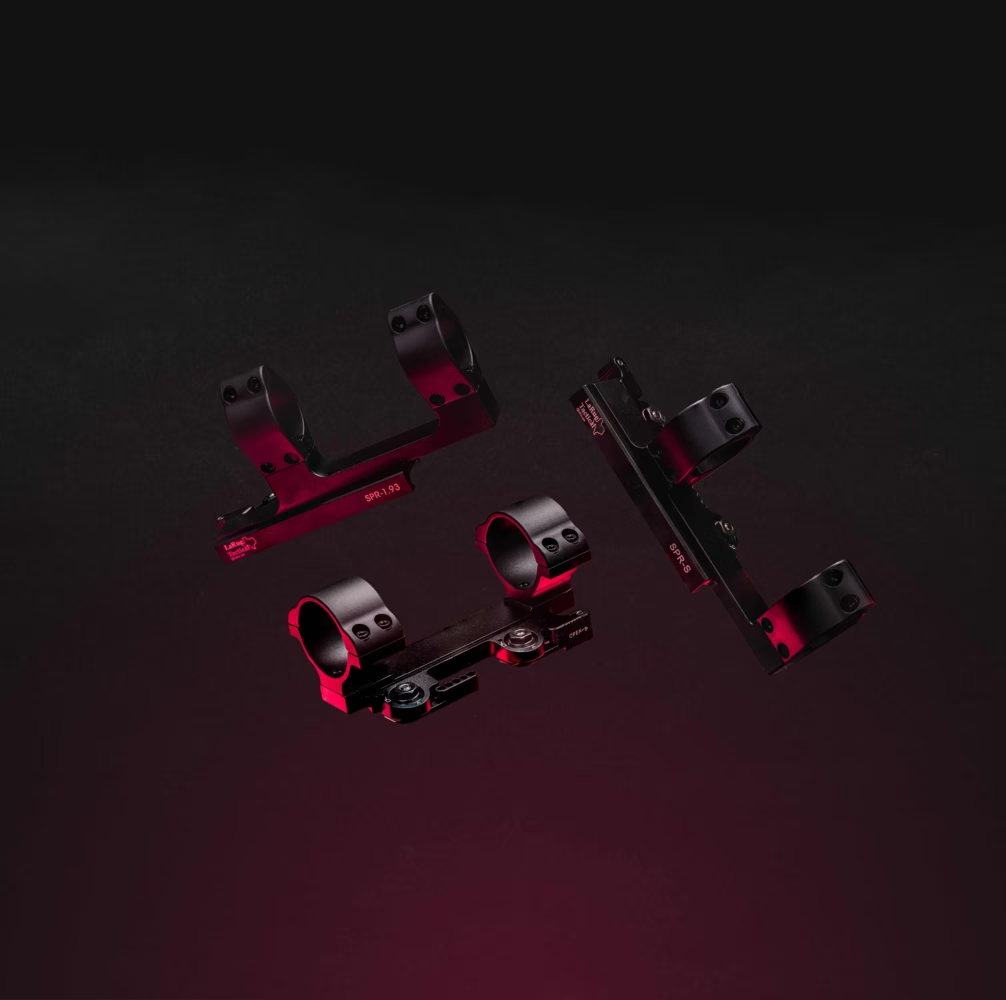
What Is A Cantilever Scope Mount?
A cantilevered scope mount is a mount that offsets the scope from the base, generally to move it forward on the rifle away from the user’s eye. The opposite of this would be a square mount, which does not offset the scope and positions the center of the scope directly over the center of the mount.
In most cases, cantilevering is found in one-piece mounts, but cantilevered rings are available.
The purpose of a cantilever scope mount is to create more distance between the user’s eye and the ocular lens of the scope. This allows a scope to be mounted securely to a rifle with a relatively short receiver, but still simultaneously allows the user to obtain a proper sight picture with a comfortable head position.
Without a cantilever mount, scopes on rifles with short receivers, such as an AR-15, would be positioned far enough back that the user would have to either stretch their neck away from the scope or extend the stock to get their head within the eye box of the scope, compromising comfort and ergonomics, and therefore performance.
Cantilever mounts solve this problem perfectly.
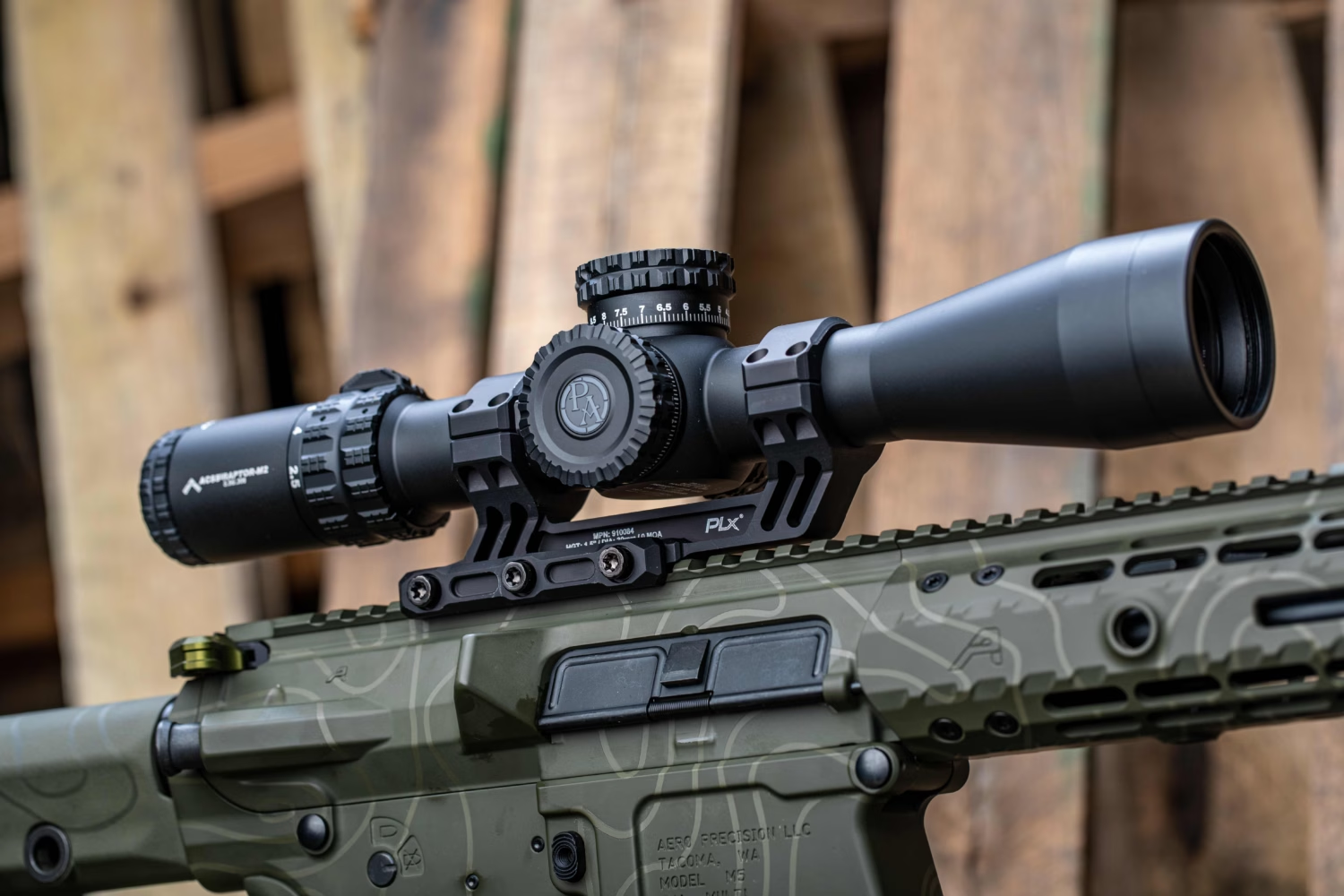
Cantilever Scope Mount Vs Scope Rings
Cantilever mounts and scope rings are essentially opposite ends of the scope mounting spectrum, excelling at opposite things and suited to very different purposes.
Scope rings are generally square, not cantilevered, and so are best for firearms with a receiver position that is conducive to a comfortable head position and good sight picture, such as bolt-action rifles or semi-automatics with a drop-comb stock like the Browning BAR. Because these rifles do not need cantilevering of the optic, rings are by far the most common choice.
Rings tend to be more economical than mounts, owing to the simplicity of their manufacturing and the smaller amount of material used. They also often can be used to mount a scope lower to the receiver than most single-piece mounts can offer, which can be important for those looking to minimize height over bore, as many long-range precision enthusiasts do.
[CTA] [https://www.primaryarms.com/rifle-scopes/brand/primary-arms]
Cantilever mounts, on the other hand, not only offset the scope forward but also frequently position it higher, which can offer a more “heads-up” firing position and reduce neck strain. For this reason and others besides, cantilever mounts are a popular choice for low-power variable optics.
Additionally, cantilever mounts are often available in much taller heights than scope rings. Some Unity LPVO mounts even reach heights over 2″–significantly higher than most rings.
Single-piece scope mounts, whether cantilevered or square, also sometimes offer secondary mounting positions for offset red dots or accessories like anti-cant devices. Due to their limited size, rings are rarely able to offer the same.
The AUS Reptilia Mount, for example, offers both forward and aft accessory mounting points and can even be equipped with a piggyback red dot mount as well.
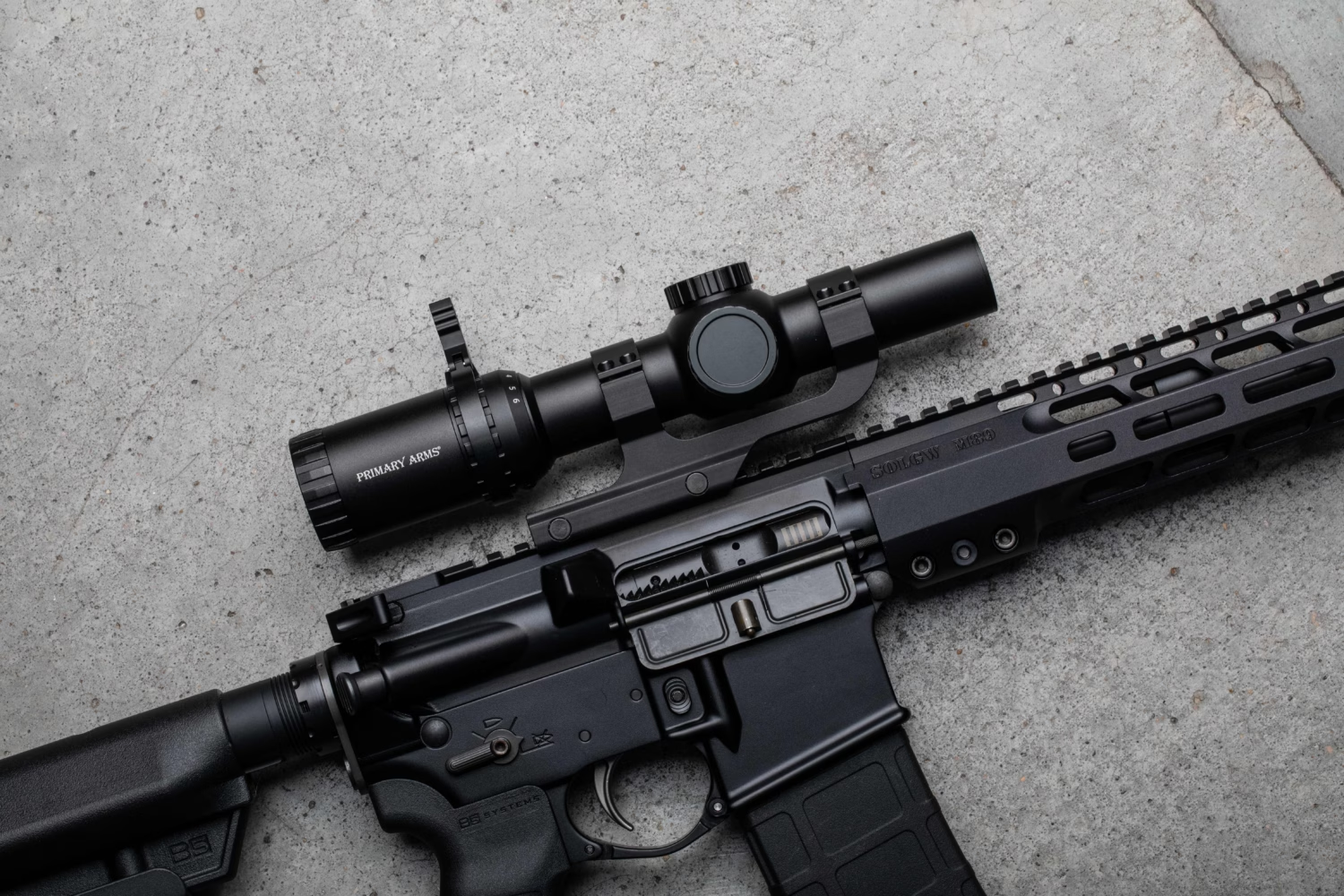
Do I Need A Cantilever Scope Mount For My AR-15?
Probably, but not always. Whether or not you need a cantilever scope mount will depend on your optic, your rifle, and your particular physical dimensions.
Most AR-15s will be best served by a cantilever mount. AR-15s have a relatively short receiver design, and it’s important that the scope be mounted securely and solely to the receiver.
If your AR is equipped with a handguard with a top rail, it may be tempting to grab a set of rings and simply mount the scope wherever it offers the best eye relief–usually with the rear ring on the receiver and the front ring on the handguard. This is called “bridging,” and it’s usually a bad idea.
Bridging anchors the scope to two different, unconnected parts: the receiver and the handguard. While these parts may seem rigidly attached, it’s actually quite common for them to flex and shift imperceptibly during normal use. Bracing against a barricade, loading a bipod, or even just tightly pulling the rifle into your shoulder can put tension on the handguard.
When your optic is bridged, this movement can slightly shift the position and angle of your scope, resulting in your point of impact being different from your zero. And because the movement of the receiver and handguard can change from position to position and moment to moment, so too can your point of impact. Obviously, this can have a significant effect on your accuracy.
A cantilever mount remedies this issue entirely, securing the scope exclusively to the receiver. However, there are a few instances in which a cantilever mount may not be necessary, although one generally can still be used without issue.
Monolithic Receivers
The first and most common reason you may not need a cantilevered mount is if your AR-15 features a monolithic receiver or top rail. Monolithic receiver designs like the LMT MARS series of rifles utilize a handguard that is machined as part of the receiver, meaning that an optic could be mounted anywhere along the top rail and still be secured to the receiver, eliminating any risk of flex or possibility of bridging.
Other rifles, including non-AR-15 designs such as the Sig MCX, utilize a monolithic top rail, even though they do not feature a fully monolithic rail design. This offers the same mounting flexibility as a fully monolithic receiver like the LMT.
For monolithic rifles, either a cantilever or square mount can be used without issue.
Certain Handguards
There are a handful of handguard designs that utilize a full-length top rail that bridges both the handguard and the receiver, securing them together and increasing rigidity. Both the VLTOR CASV and PRI forearms with their SPR rail equipped feature this design.
These handguards effectively convert the rifles they are installed on to be monolithic. While the receiver and handguard are still separate parts, through the use of a connecting rail they are rendered sufficiently rigid that handguard flex becomes a non-issue under normal use.
With these handguards, nearly any type of scope mount can be used, just as with true monolithic rails.
Very Short Eye Relief
While rare, some scopes have such a short eye relief that shifting them forward is unnecessary. Simply mounting the scope to an AR-15’s receiver situates them properly for a comfortable head position and scope eye relief, particularly used with a longer stock such as an A2 stock or a Magpul PRS.
In this case, a square mount or set of rings is sufficient for scope mounting, and a cantilever mount may locate the scope too far forward for proper head positioning.
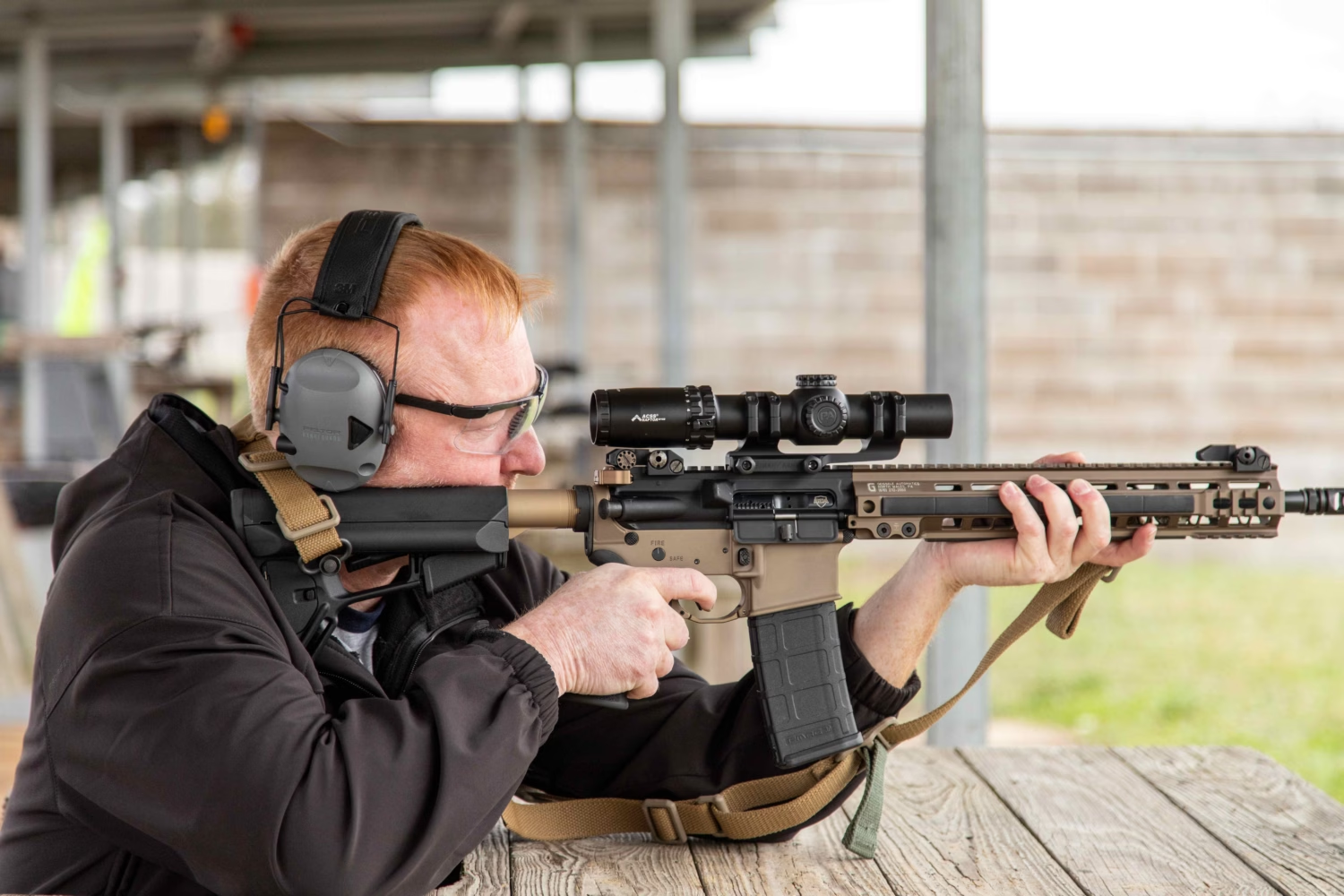
Where To Place A Cantilever Mount
In most cases, cantilever mounts should be placed as far forward on the receiver as possible without bridging the mount onto the handguard. Most users will find that with most scopes, particularly LPVO scopes, they need as much additional space between their eye and the ocular lens of the scope as possible.
However, ultimately, proper head position and sight picture are the most important things. If shifting your mount backward a slot or two creates a neutral head position with minimal neck strain and a perfect sight picture, then by all means, install it there.
Popular Cantilever Scope Mounts
There are a huge number of high-quality AR scope mounts available on the market, but these models are among the most popular.
ADM
ADM’s AD-Recon scope mounts are among the most popular on the market, prized for their QD functionality and innovative vertical split rings. Their QD design allows the optic they house to be rapidly removed and reinstalled for storage, transport, or to move a single optic between multiple rifles.
ADM mounts are available in a wide range of different heights, offsets, and diameters, so there’s an option for every rifle and every use case.
Aero Precision
Aero Precision’s aptly-named Ultralight scope mounts are best known for their exceptionally low weight. They’re crafted from high-quality 6061 extruded aluminum and utilize a minimalist design to keep weight down to a scant few ounces, although they forgo QD functionality in order to do so.
The Aero Precision scope mount also features a unique hooked ring design that minimizes the need for screws, further shaving down its weight.
Geissele
While the Geissele name may be synonymous with triggers, they also offer a line of top-quality cantilevered scope mounts. The Geissele scope mount, the Super Precision mount, is precisely machined with integrated recoil lugs and classic, powerful nut-and-bolt clamps capable of exerting up to 1,400 pounds of force on the rail.
Geissele mounts offer some of the most dramatic offsets on the market, with standard, extended, and hyper-extended models.
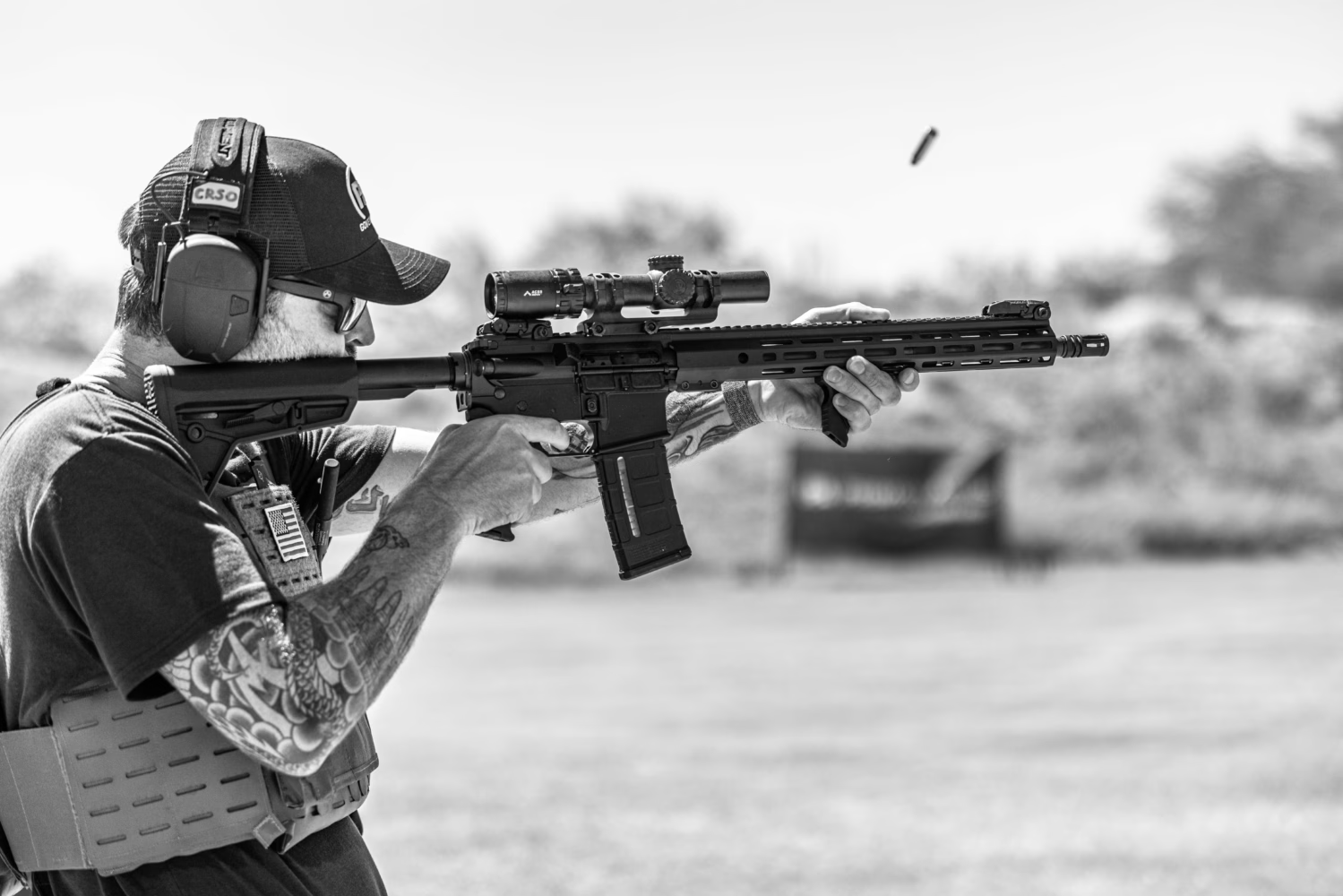
Conclusion
For most rifles and most users, cantilever mounts are the best scope mounting solution for an AR-15. Other rifles may be better suited by rings or square single-piece mounts, but AR-15s almost always benefit from the increased distance between the user and the scope. However, in certain uncommon circumstances, a different mount may be preferred.
